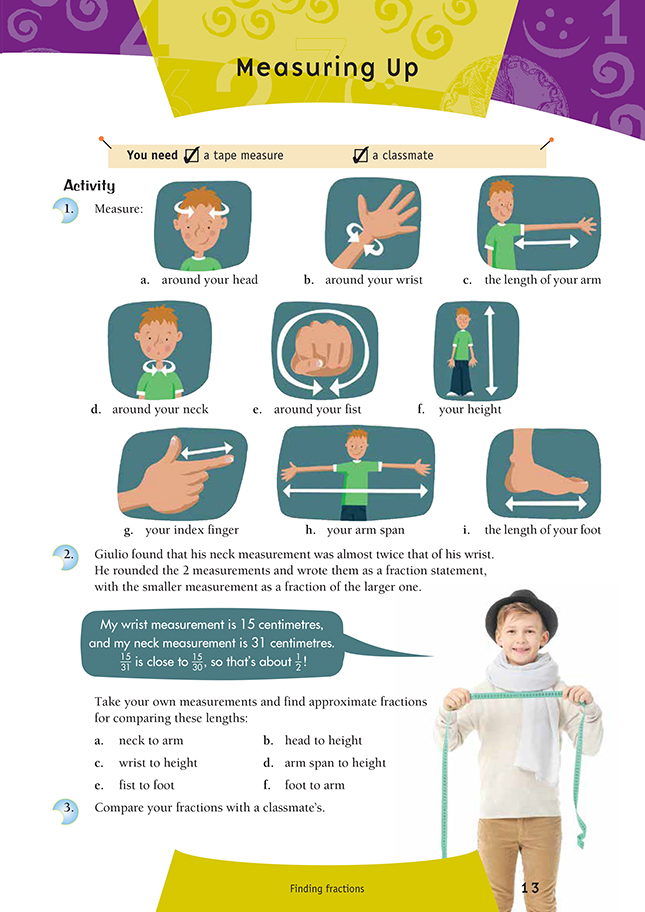This is a level 4 number activity from the Figure It Out series. It relates to Stage 7 of the Number Framework.
A PDF of the student activity is included.
Click on the image to enlarge it. Click again to close. Download PDF (229 KB)
take measurements and find an approximate fraction
A tape measure
FIO, Level 3-4, Number, Book 2, Measuring Up, page 13
A classmate
This activity investigates length measured in standard and non-standard units. Rounding is used to develop fractional numbers so accurate measurement is not critical. However, it’s a good opportunity to discuss when precise measurements are important and how to select the “right measurement tool for the job”. (See level 3, “Use Reasoned Measurement”, in The New Zealand Curriculum Exemplars: Mathematics.) The activity is suitable for students who are advanced multiplicative or beyond.
The students need to think about sensible rounding, including rounding numerators and denominators to numbers that make the fractions easier to simplify. They will find the tidy numbers strategy useful in connection with the rounding required in question 2.
Students with a strong knowledge of multiplication tables (and common factors) will quickly simplify the fractions. Two examples where the numerator and denominator will be the same, making one whole, are:
• a person’s arm span (from finger tip to finger tip) is approximately equal to their height
• the circumference of a person’s fist is approximately equal to the length of their foot.
You may need to remind the students that if the numerator and the denominator are the same, the fraction equals one whole. (See also Number: Book Three, Figure It Out, Level 3, pages 22–23.)
The ratios in this activity (for example, wrist to neck is 1:2) are expressed as fractions, which is more appropriate for students at this level. It also provides them with practice in simplifying fractions. The students may be surprised to find out that the ratios or fractions are more or less standard for most people.
Answers to Activity
1. Practical activity. Results will vary.
2. Answers will vary. Possible approximate fractions could be:
a. 1/2
b. 1/3
c. 1/11
d. 1/1
e. 1/1
f. 1/2
3. Estimates will vary.
